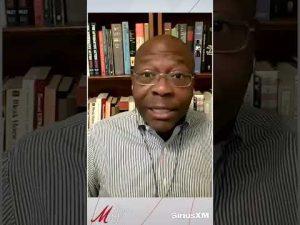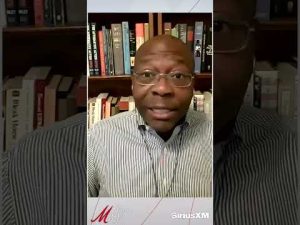The recent debate surrounding immigration and employment has taken an interesting turn, thanks to a viral commentary video that brings to light a contentious yet foundational economic issue. The discussion revolves around American readiness, or lack thereof, to fill certain low-wage jobs and the convenient scapegoating of immigrants to fulfill these roles. The conversation emerges from popular commentators, including Charlamagne Tha God and Andrew Schulz, who inadvertently touched on the disturbing parallel between exploiting migrant labor and historical forms of coerced work, even if their intent was not so clearly defined.
Charlamagne Tha God suggests an idea seemingly aimed at economic revitalization: keep migrants here to work in factories at low wages. On the surface, this appeals to efficiency and industry rejuvenation, but it’s necessary to dissect the underlying implications. The notion of exploiting vulnerable individuals who often lack legal protections and might accept subpar wages resonates disturbingly with economic practices that were fundamental during darker times in history. While not akin to the brutal systems of old, the essence of seeking the cheapest possible labor to maximize production echoes the motivations that once justified slavery, albeit without its physically coercive aspects.
There’s a widespread misconception that Americans won’t take certain jobs, but it’s critical to challenge this notion as an oversimplification. Americans have shown, especially in the past, that when job opportunities exist and the market functions without artificial depressions of wages, they are more than willing to roll up their sleeves. Historically, young people and those needing a first step into the workforce have filled these roles, gaining invaluable life experiences and skills. The real issue lies not in unwillingness but rather in the oppressive competition from underpaid labor that undermines fair wages.
It’s crucial to note that solutions to this situation are neither simple nor painless. Implementing tariffs and rebuilding domestic industries are part of a larger strategy to bring jobs back home, increasing not only employment opportunities but protecting wages in the long run. Yes, this might mean short-term discomfort in terms of pricing adjustments, but it’s a necessary step to ensure American workers are not sidelined by a race-to-the-bottom labor strategy. This challenges businesses to innovate and adapt, fostering a robust economy that does not rely on exploiting the most vulnerable.
Moreover, the debate touches on an often-overlooked point: the potential of young American workers. When given the chance, these individuals can fill entry-level positions, learning the value of hard work and financial independence. This would require a shift in societal attitudes and the removal of easy government handouts that disincentivize work. Encouraging self-reliance and fostering a work ethic early on can have lasting benefits not only for individuals but also for society as a whole.
In conclusion, while the commentary initially intended to shed light on the potential economic benefits of employing migrants, it unwittingly exposed a critical flaw in current political narratives. Real solutions require balanced policies that protect American workers, ensure fair wages, and promote economic growth all while respecting the dignity of all individuals. The conversation around tariffs and domestic job creation is not just political noise but an essential debate about the future structure of the American economy. Let’s focus on building an economy where opportunity isn’t relegated to the cheapest option but where hard work, fair compensation, and mutual respect define the labor landscape.







